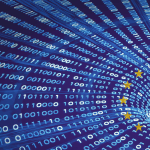My Cyber Resilient Business grant: 8 Cyber Measures for Half the Price
"Just quickly answering that email from my phone... Hey, why is my screen acting so weird?" Mark, owner of an accounting firm, saw his entire screen go black. As it turned out, he had logged in through an unsecured Wi-Fi network, and that's what a hacker was waiting for.
We all use technology in our business every day. But fair's fair: that security, we'd rather not spend time on it. Until things go wrong. And that's happening more and more often - 60% of companies in the Netherlands face cybercrime.
Fortunately, there is good news: the government is helping you through the My Cyber Resilient Business (MCZ) grant. From Sept. 2 to Dec. 31, 2024, you get 50% rebates on essential security measures, up to €1,250 per company. And the great thing is: right now, 79% of the budget is still available.
In this blog, you'll read about the eight security measures covered by the grant. So that you know exactly how to better protect your business - for half the cost. Because this subsidy is specifically intended for entrepreneurs like you: SMEs and ZZP'ers who are registered with the Chamber of Commerce, have up to 50 employees and an annual turnover of up to €10 million.

8 cyber measures covered by the My Cyber Resilient Case grant
1. Secure network access/wifi
You know the drill: you're sitting in a coffee shop and your laptop automatically connects to "free Wi-Fi. But is it really that secure? Hackers can easily watch what you do through unsecured networks. They intercept your passwords, bank details and confidential business information. With secure network access, you get a secure VPN connection that encrypts all your online activities. So you can work anywhere - at a café, with clients or at home - without criminals watching. An investment that pays for itself in one fell swoop as soon as you prevent one data breach.
2. Password Manager
"What password did I have again? Oh yes, Welcome123!" Recognizable? We all use dozens of accounts and systems. The temptation is to use the same password everywhere. But if criminals crack one password, they have instant access to all your accounts. A password manager solves this by generating and remembering a unique, complex password for each account. The only password you and your team have to remember is the password manager's - convenient, right? Plus, you share passwords securely with colleagues and see immediately if a password is too weak or has been leaked elsewhere.
3. Multi-factor authentication (MFA).
'Someone tried to log in from an unknown device in China.' You must have received it in your mailbox at some point. Not very strange, because with only a password you are not safe enough anymore. Criminals have countless ways to figure out passwords. MFA adds an extra layer of security: in addition to your password, you also need your phone to log in. Like your banking app, you get a notification or code on your phone. Even if cybercriminals have your password, they can't access your company data. A simple but effective measure that is especially indispensable with business-critical systems - and one that you can arrange in no time with the My Cyber Resilient Business grant.
4. Patch management
Delaying software updates because you're just getting comfortable? We all do it. But those updates are there for a reason - they plug security holes that hackers eagerly exploit. With patch management, updates are automatically installed outside working hours. You and your employees don't notice, but your systems stay up-to-date and secure. It prevents one outdated program from becoming the Achilles' heel of your security. Convenience serves man (and your security).
5. Antivirus software
"Oops, opened wrong attachment..." One wrong click can have major consequences. With a good antivirus software, all your systems are protected 24/7. Not only against traditional viruses, but also against threats such as ransomware that holds your files hostage. The software scans email attachments, downloads and websites even before they can do any harm. It recognizes suspicious behavior and intervenes automatically. A small investment compared to the damage one successful cyber attack causes.
6. Backups
If you do fall victim to a ransomware attack, a backup can still save you. After all, with good backups, you're prepared for the worst. Whether it's a cyber attack, a technical glitch or human error - a current backup will have you up and running in no time. Automatic backups ensure that you always have a recent copy of your important business data, safely stored in another location. This prevents one incident from jeopardizing your business continuity.
7. Risk inventory
Where are your digital risks? What data is most valuable to criminals? And what are the weaknesses in your security? A risk inventory gives you insight into where you are vulnerable. Because only when you know where the holes are can you close them. It helps you prioritize and use your security budget effectively.
8. Security awareness training
"That phishing email looked so real..." The best security cannot prevent employees from accidentally clicking the wrong link or sharing confidential information. Security awareness training makes your team the first line of defense. They learn to recognize phishing, handle company information safely and what to do in the event of an incident. The training is practical and directly applicable - no boring technical drivel, but direct practice in practice. Because cybersecurity is people work.
How do I arrange the My Cyber Resilient subside?
Want to know which measures make the most sense for your business? Via the CyberSafe check of the Digital Trust Center you can check how you stand in terms of cyber security. On the basis of these results, you will receive personal advice - then we will think along with you. Because yes, cybersecurity can be complex - but we like to make it simple.

